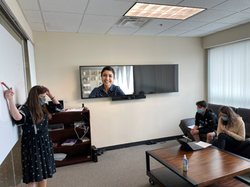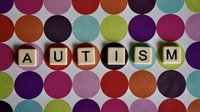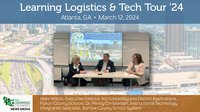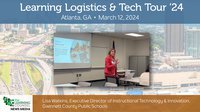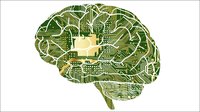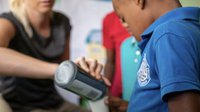Empowering Students in Special Education with Superior Audio and Video Collaboration Technology
Teachers are driven to reach students in meaningful ways so they will prosper well into the future. The latest audio and video collaboration technology is giving schools a helping hand in this mission. Two years ago, Lincoln-Sudbury Regional High School in Sudbury, Massachusetts launched a new program for its special education students, the L-S Academy. Classes were held temporarily in a church before the school sublet space within Yamaha’s regional office complex. While it might seem like an unorthodox space, it offered amenities the program deeply needed: especially the robust, easy-to-use Yamaha CS-700 Video Sound BarTM.
When the program launched, the church offered little in the way of AV support. They had a small portable projector with no screen and a rolling TV cart; neither were particularly suited for the future of learning. Adding to that challenge is that students are used to being on their phones and mobile devices all day.
“Because we’re working with a more intense population, teachers can lose students’ attention really fast, but factor in poor audio and video, then it’s much worse,” said Colin Cox, the school’s psychologist. “Our students feel audio fatigue sooner than most. The entire experience wasn’t engaging, and it made our jobs even more difficult.”
One of the program’s missions is to offer enrichment activities, from movies to guest speakers. However, due to the pandemic, the school had to close its doors to outside guests not long after moving in. It was a serendipitous moment when the teachers realized that with the Yamaha Video Sound Bars that were already installed throughout the building, they could not only continue these services but also enhance their curriculum and workflow beyond what they had envisioned.
The reason Yamaha’s CS-700 works so well in education is because it is designed to bring spectacular audio and video clarity to all communication and collaboration needs. Although displays and projectors that have typically been used in classrooms have built-in speakers, they can lack the power and clarity for classroom use. A poor audio experience isn’t just frustrating, it’s severely disruptive, costing student focus and long-term achievement. What’s more, organizations need a high-quality video camera that’s necessary to keep up with the arising onslaught of remote meetings.
With this in mind, Yamaha created an all-in-one solution that combines surround sound, microphone recording, and a camera that pair perfectly with classroom displays and projectors. Levering Yamaha’s decades of expertise in engineering superior AV technology, used by Fortune 500 companies and by K-12 and top universities alike, the Video Sound Bar incorporates an adaptive beamforming microphone array for perfectly captured conversation; four Yamaha speakers to provide the highest degree of audio intelligibility for everyone in the room; and a wide-angle HD camera for the far-end video conferencing participants to see everyone in clear detail. It’s designed to be intuitive for even the least technologically savvy user, helping to eliminate calls to tech teams for support while at the same time, getting the classroom activity started faster.
At the academy, the teachers quickly learned how to use the system and connect to their chosen UC platform, Google Meet. With a simple USB connection to their laptop, they were ready to go. Plus, with all the video, audio, and collaboration components included, they didn’t have to worry about operating separate components that often require a multi-step workflow that robs valuable learning time.
The technology has completely changed the program, from classes to meetings to activities and how they bring in guest speakers. The teachers are rigorous daily users of the Video Sound Bars. They use them in psychology and science lessons to present slideshows, video clips, and movies. In addition, students are able to join classes at the main campus remotely.
“We can’t teach in a traditional way anymore. We need more than paper and pencil,” said Tracie Lopez, program director and teacher at L-S Academy. “We’re amazed how the CS-700 supported us. It’s totally changed the way that I present my material. I don’t know what I would have done if I was still using an old projector or a small TV, like we were doing in the church. I’m not even sure I could have.”
The organization is able to drive more impactful meetings and presentations. They host weekly program meetings and include staff members who are also remote. Likewise, they attend faculty meetings at the main high school remotely. In both instances, staff are able to join in and feel every bit a part of the conversation.
Another example of the system’s versatility was when they brought in guest speakers and held a diversity training with a cultural panel. Using the conference room set up with dual displays, they were able to show the speakers on one screen while the other panel showed presentation content, including video clips from YouTube and MTV. Students felt comfortable interacting and asking the speaker’s questions.
“Yamaha’s quality helps us boost engagement in multiple ways,” said Lopez. “Before, we would try to show them movies and they wouldn’t even watch. When we ran a summer program this year, the clinician who would come in would use the system to play country line dance program. I couldn’t believe she got them to do it, probably in part because the music sounded amazing. The technology has definitely helped our students let go and have fun. We want to see them engaged and laughing — that’s a big thing.”
It has also been beneficial for parents. Individualized Education Plan (IEP) sessions and other parent meetings are conducted over Google Meet, which allows staff to more easily coordinate and communicate with parents and students.
While the school is only currently subletting the space, they’re already thinking about the evolution they’ve experienced in the short time they’ve been using the CS-700 system. They hope to purchase additional units going forward as a permanent feature of the program.
“We couldn’t go backwards,” said Lopez. “We see the change in the students’ experience as well as the staff’s.”

